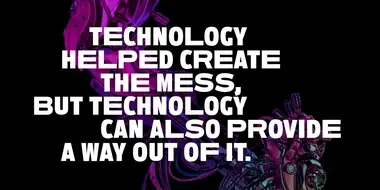How brands can stand out amidst the digital noise.

With seemingly every business in the world launching apps, online services, and other digital properties as they cope with disruptions from the COVID crisis, many brands are likely wondering how they can stand out from all the sudden digital noise.
When we think about where businesses can stand out, most of us think of what a customer sees: The website, mobile app, digital ads, and so on, all built with an intuitive UX that makes it easy to browse, shop, or find information.
But a great UX is no longer the distinguishing factor it once was. Instead, it has become the baseline criteria for today’s customers, who expect things to be easy, intuitive, and quick. Digital design has evolved as a result, slowly converging around some basic principles that are proven to work well for the widest range of users and digital touchpoints. A recent study confirmed this trend, finding that the differences between websites decreased considerably over the past decade, with the differences in layout decreasing the most.
Conformity isn’t necessarily a bad thing when it comes to usability. If you know how to drive a car, for example, you more or less know how to drive any car (unless you’re traveling in Europe and never learned to drive a manual). The same is true for digital design. The similarities in basic structure and layout mean people can find their way through the web without too much hassle, regardless of what device they’re using.
And therein lies the challenge: If the web is increasingly and necessarily becoming more similar, how do you set yourself apart from the crowd? And especially during one of the more challenging moments any of us have ever known?
Sweat the small stuff.
The simple answer here is: “Your brand.” That might seem obvious, but make no mistake: This is a profoundly challenging and important moment to be doing any kind of branding. So what does that actually mean for companies trying to establish or grow a foothold in the digital world?
Let’s go back to the car for a moment. It’s true that if you know how to drive a car, you can pretty much drive any car. But there’s also a huge range in the driving experience between even similar cars. What distinguishes them is the details—not just where the buttons, dials, and gauges are located, but how they feel, function, and how they look. These details form the experience of the car, which is to say they form the experience of the brand.
A website is no different. The details, in this case, are your creative assets—the fonts, colors, imagery, iconography, and video that tells your story and connects with your customers. These form the experience of your brand, distilling your values and personality, and expressing both throughout whatever digital touchpoints you create for your customers.
But for most businesses, we’re not just talking about one website. Many brands are managing an ecosystem of apps, digital ads, social media platforms, video—who knows what else. Customers use all those touchpoints, too: 90% of customers use multiple devices to accomplish a task, 70% use more than three devices, and 67% begin on one device and continue on another.
This is where the details really matter. Each of these touchpoints feeds into the broader relationship between your customer and your brand, so they all need to feel connected within the same visual system. When you get these small details right, it shows your customers that you’re invested in their experience and in delivering something special. Basically, you care!
Consider the times you’ve opened a company’s app, for example, and found it looking … off. Maybe the font doesn’t look right, or the colors aren’t what you expect. It may sound like a minor thing, but if you know what the company’s font is supposed to look like, seeing a different (and possibly less appealing) font can be surprisingly disruptive. Why is it different? Is the app broken? Is this even the right app, or could it be a fake?
Glitches and bumps in the road are inevitable, but there is a real risk of eroding your customer’s sense of connection to your brand. Customers today have a growing list of options, and, especially under the circumstances, have very little patience for brands that don’t have their act together when it counts. It doesn’t take much to turn people off.
Build from the inside out.
It’s difficult to maintain a unified visual identity externally without an equal commitment to your brand internally. We tend to think of creatives and marketers as the primary guardians of the brand. But any team member who sends an email, delivers a presentation, or creates an invoice has a role in the upkeep of your identity.
Even if emails and presentations are internal and the public never sees them, they still live within your brand network. So ask yourself: What fonts are people using? Is it our brand font, or something random they chose themselves? Do our accountants, customer service reps, and (especially?) executives even know what our brand font is?
The reality is that everyone in your organization is a brand manager, whether they realize it or not. So if details matter (and they do), everyone at your organization should feel empowered to be stewards of the brand.
People who care about the details customers may never see will be more invested in the details customers can see. When your team is familiar with your brand assets and uses them in their own work, they’re more likely to spot inconsistencies at those small but crucial junctures where a customer’s trust can be gained or lost. The operative word in all this, however, is “empower.” It isn’t enough to simply declare that, henceforth, all employees must use XYZ font in their emails and then never speak of it again. Instead, it’s up to the company to foster a shared sense of purpose and, above all else, make it easy for people to access and use your brand assets.
This is what “sweating the small stuff” looks like in practice—looking beyond what the customer sees and developing an organizational commitment to making sure every corner of your brand stays true to the vision you share with your customers. This is especially crucial at a moment when more and more brands are going digital, but that commitment will pay off long after we settle into some sort of new normal.
Ultimately, brands that want to stand out and build authentic connections with people need to think like people. And all of us know there are no quick fixes in life, especially now, as we all stare down an unknowable future. “Authenticity” isn’t something you do or create, it’s the fabric of who you are. It’s rooted in the places people can’t see and built from choices most people will never know about.














